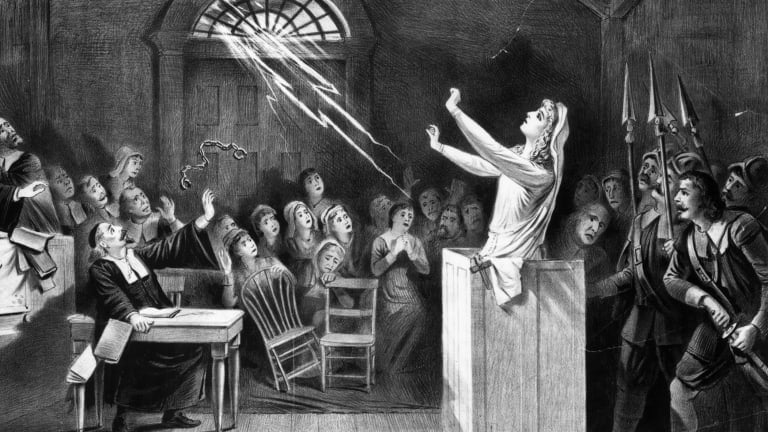The Salem witch trials took place in colonial Massachusetts between 1692 and 1693. More than 200 people were charged with witchcraft or the Devil’s magic, and 20 were executed. Eventually, the colony admitted that the trials were a mistake and compensated the victims’ families. Those accused of witchcraft in the Salem Witch Trials did not have many options. But did you know that those who confessed never got executed?
During the Salem witch trials, none of the people who admitted to being witches were executed. All 20 people who were executed for witchcraft refused to confess.
The Witch Hunt of the 17th Century
One must first examine the historical context of witchcraft accusations to comprehend the events of the Salem Witch Trials. There were the everyday stresses of life in the Massachusetts Bay Colony in the 17th century.
A strong belief in the devil, factions among Salem Village families, and rivalry with neighboring Salem Town, combined with a recent smallpox epidemic and the threat of attack by warring tribes, made for fertile ground for fear and suspicion. More than 150 men and women from towns surrounding Salem were soon imprisoned; their names had been “cried out” by tormented young girls as the source of their pain. All would stand trial for witchcraft, a crime punishable by death in 17th-century New England.
Salem Village was a small New England town populated mainly by Puritans or religious people who believed in the devil at the time. The Puritan way of life was strict, and even minor differences in behavior were frowned upon. Much of the Puritan community agreed that the Parris girls had been victims of witchcraft after hearing about their behavior.
Betty and Abigail blamed three townswomen, including Tituba, a Native enslaved American who worked in the Parris household, when asked who had done this to them. Tituba was known to have participated in fortune-telling games, which the Puritans strictly prohibited. The community did not like the other two accused women, Sarah Good and Sarah Osbourne. (Source: The Salem Witch Trials)
The Start of the Salem Witch Trials
The three women were imprisoned while awaiting trial for witchcraft. During the trial, Tituba admitted to seeing the devil and mentioned a coven, or group, of witches in the Salem Village area. Good and Osbourne maintained their innocence. The court did not believe them, and all three women were found guilty of witchcraft. The punishment was death by hanging.
Other young girls claimed to have been infected with witchcraft as the weeks passed. They accused other townspeople of torturing them, and some of the accused witches even named others as witches. (Source: The Salem Witch Trials)
When Did the Witch Salem Trials Stop?
After realizing how unfair the trials were to the accused, the court eventually refused to hear any more witchcraft charges. In 1711, all of the accused were finally pardoned.
Nobody knows why the witch craze spread so quickly, but it left an indelible mark on the American legal system, and the way evidence and witnesses were treated. The Salem Village hangings were the country’s last executions of accused witches. (Source: The Salem Witch Trials)
Image from History
